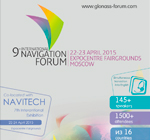Bazarov Yuri

Since 1969 to 1996 served for Navy in verious positions in the test and scientific authorities. Captain of the 1-st Rank (retired), Doctor. Engaged in development and trials of navigation equipment of navigation satellite systems Parus, Tsikada, GLONASS and satellite system of search and rescue of КОСПАС-SARSAT. In 1986 — Chairman of governmental commission on trials of GNSS GLONASS navigation equipment for submarines. In different years from 1991 to 2006 presented USSR, Russian Federation, “Internavigation” STC and JSC “TRANSAS” in the international organizations IEC, IALA, RTCM. Since 1999 to 2010 JSC “TRANSAS” — Chief designer of AIS class A (T100, T102, T104), AIS class B (T600, T600-01 SO), AIS base stations (T210, T214-is delivered and on the foreign market), AIS receiver T300 (was delivered and on the foreign market), a AIS pilot equipment (T603). In 2001 in Hamburg on the vessel “GAUSS” passed the international trials of the very first prototypes of AIS among numbers of the foreign companies. Trials were carried out to check requirements of the developed draft of the international IEC 61993-2 standard (AIS class A) on radio compatibility of products of different manufacturers, the organization of information exchange between vessels with use of TDMA access. Among these samples there was TRANSAS AIS class A T100 (at the same time the first-ever AIS base station TRANSAS T210 was presented which provided check of VTC by means of AIS). Participant of a number of the international exhibitions NEVA, Sea salon. Since 2011 — Adviser of General Director Deputy, JSC “TRANSAS” . Since 2015 — Director General Adviser, JSC “Kronshtadt Technologies”.
Выступления:
The main attention the international sea community is concentrated on specification of formulation of e-Navigation Concept and its realisation. E-Navigation Concept is based on Global Navigation Satellite Systems which is the main means of navigation ensuring location, time, a course and the speed of sea and inland vessels, on development of coastal infrastructure, expansion of of VHF data exchange systems with use of satellite communication channels and shore stations of AIS, introduction of e-mail.
The analysis of copmposition and status of development of the international and domestic normative and technical documents regarding navigation and safety of seagoing and inland vessels developed by IMO, ITU, IEC, IALA, ECE Inland Transport Committee is carried out (The IMO e-Navigation Concept; amendments to the IMO Convention of SOLAS chapter V; Resolutions of IMO; Recommendations of ITU; IEC standards; Recommendations of IALA; Directives and EU standards). National GOSTs for GNSS and AIS shipborne equipment were analized also.
The main requirements for navigation and safety of seagoing, inland waterways vessels and for vessels on the Northern Sea Route in the Arctic are stated.
A number of shortcomings of the existing normative and technical documents is noted: essential lag (and a number of standards absence in general) in development of national standards from international and in its introduction in action; insufficient quality of standard documentation, absence in GOST of a number of the key terms and their definitions which are base of requirements in the international documents; some precision characteristics of GNSS GLONASS are specified incorrectly; incomplete compliance of test methods of national standards to techniques of the international standards; there is no strict organization in standard development , passing of expert examination before the publication. Development of “The navigational Code” — one of the ways to solve these problems.





